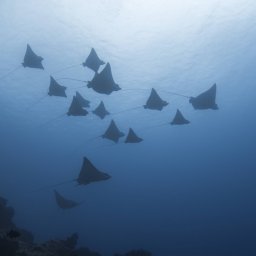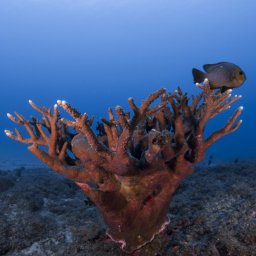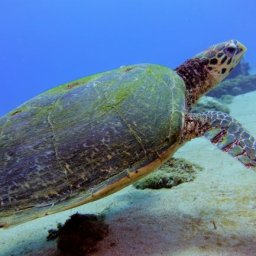Why are there so few corals in Mauritius?
Unlike diving in places like the Red Sea, the Coral Triangle, Oceania or any commonly top-rated coral reefs across the globe, you, unfortunately, won’t find a great amount of coral while diving in Mauritius. You will also find more corals in the shallow lagoons of the Mauritian fringing reefs than on the fore reef, especially in the deeper parts thereof.
Despite constant concerns of climate change-related effects and their influence on coral reefs worldwide, climate change only plays a very minor role in the decline of Mauritian coral reefs and our reefs have mostly been spared major damage. Since the global mass bleaching events of 1998, despite a massive coral loss in the Indian Ocean, coral cover in Mauritius actually increased[1].
Despite constant concerns of climate change-related effects and their influence on coral reefs worldwide, climate change only plays a very minor role in the decline of Mauritian coral reefs and our reefs have mostly been spared major damage. Since the global mass bleaching events of 1998, despite a massive coral loss in the Indian Ocean, coral cover in Mauritius actually increased[1].
Nonetheless, coral cover at our diving spots has always been quite low and has been constant since opening our dive center 12 years ago. Mauritius has (luckily) seen no major outbreaks of the coral eating Crown-of-thorns-starfish so far, which have devastated reefs in Australia, Seychelles, and many other places.
Today only stories from older generations of a once more colorful and abundant coral reef live remain.
Today only stories from older generations of a once more colorful and abundant coral reef live remain.
The story of the coral decline in Mauritius began about 400 years with the first Europeans arriving on the island, utilizing the vast forests of valuable tropical wood. With an increased clearing of land for e.g., sugar cane plantations more and more terrestrial sediments reach the ocean. This, unfortunately, resulted in ongoing and persistent sedimentation of the lagoons and adjacent coral reef. Increased sedimentation can result in reduced light availability, smothering and inhibiting coral growth.
During bad weather, this can often be observed during our dives with visibility dropping from more than 20m down to less than 15m.
The major sources of long-term coral loss in Mauritius include[2]:
– Agriculture, especially sugar cane plantations which are also a major source of fertilizer and pesticide input into the coastal oceans
– Removal of wetlands to make space for human settlements (and nowadays big
hotels/resorts). These wetlands used to trap a lot of sediments before they entered the ocean.
– Sand removal for construction sites all over the island (fortunately illegal by now)
– Coastal and industrial development
– Overfishing and destructive fishing methods
– The tourism industry, especially dropping of anchors from tour boats (unfortunately still also dive boats) and shell and coral collection
– Removal of wetlands to make space for human settlements (and nowadays big
hotels/resorts). These wetlands used to trap a lot of sediments before they entered the ocean.
– Sand removal for construction sites all over the island (fortunately illegal by now)
– Coastal and industrial development
– Overfishing and destructive fishing methods
– The tourism industry, especially dropping of anchors from tour boats (unfortunately still also dive boats) and shell and coral collection
None of these major factors are recent developments but rather in the making for several decades by now. Considering this long process of reef degradation, it is doubtful that even the stories of the older generations can do the former, true beauty of our coral reefs justice.
Especially since a major part of the reef were already severely degraded before the first divers explored the depth of our coasts.
Especially since a major part of the reef were already severely degraded before the first divers explored the depth of our coasts.
[1] McClanahan, T. R., Maina, J., Moothien-Pillay, R., & Baker, A. C. (2005). Effects of geography, taxa, water flow, and temperature variation on coral bleaching intensity in Mauritius. Mar. Ecol. Prog. Ser., 298, 131–142.
[2] Reef Conservation Mauritius, https://www.reefconservation.mu/
[2] Reef Conservation Mauritius, https://www.reefconservation.mu/










